Affiliate links on Android Authority may earn us a commission. Learn more.
Motorola Droid Turbo Review
Published onNovember 13, 2014
A little over five years ago the world was introduced to the very first Motorola Droid, an Android device built exclusively for the Verizon network. In the time since, Motorola has seen its fair share of ups and downs, but the Droid brand continues to be an iconic series that is well known and loved by many Verizon users.
Related: Best cases for the Droid Turbo
While Droid devices have always been some of the best handsets offered exclusively for use on Verizon’s network, the latest member of the family raises the bar significantly. Join us as we take an in-depth look at the Motorola Droid Turbo!
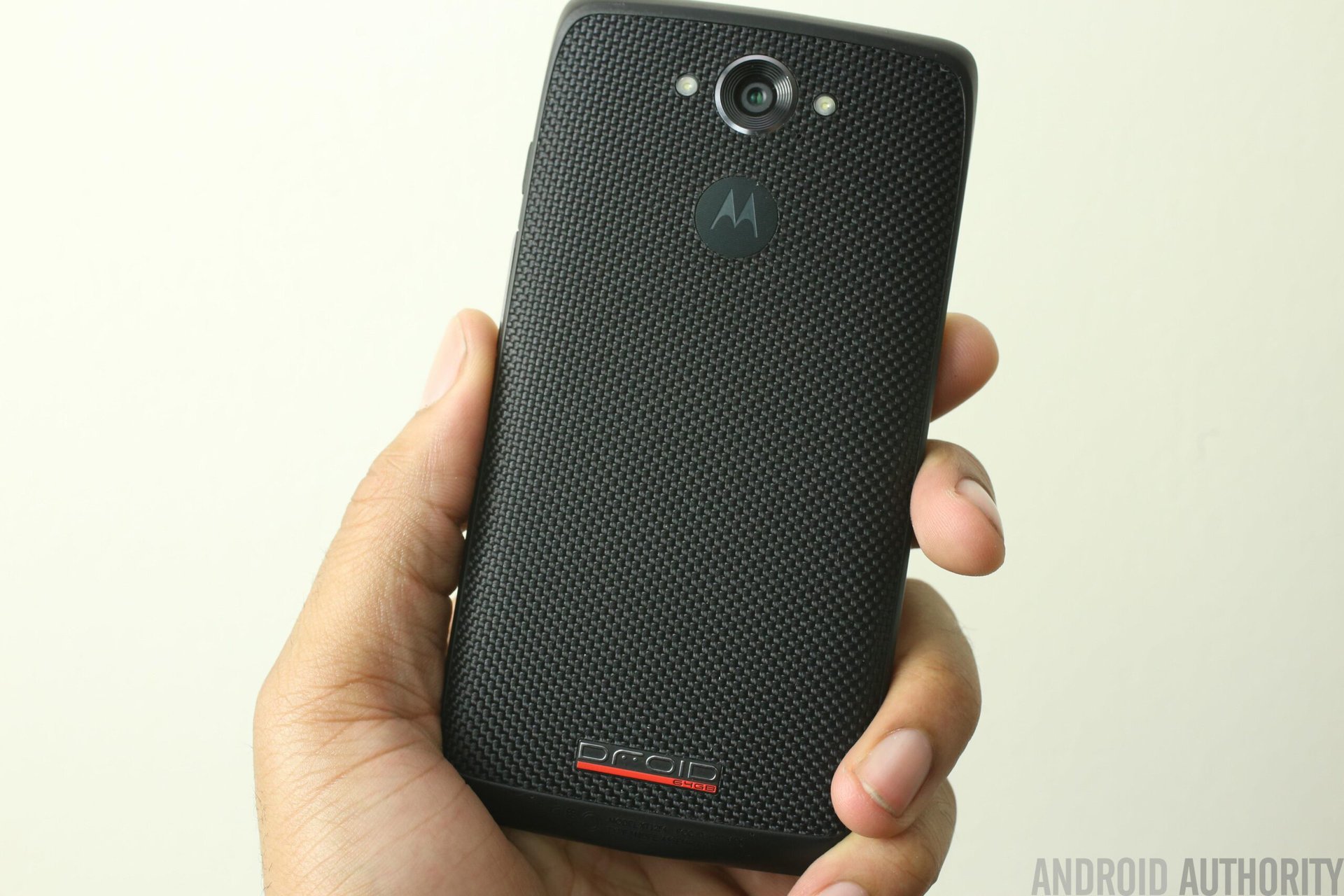
The Motorola Droid Turbo is available in three different color options: a metallic black, a metallic red, and a ballistic nylon black. The difference between these models goes beyond the color, as the color you choose also dictates what material you’ll find on the back of the device. While the metallic black and red options feature the Kevlar backing traditional to the Droid line, Ballistic Nylon is a new option available to users, and happens to be the version I utilized for this review.
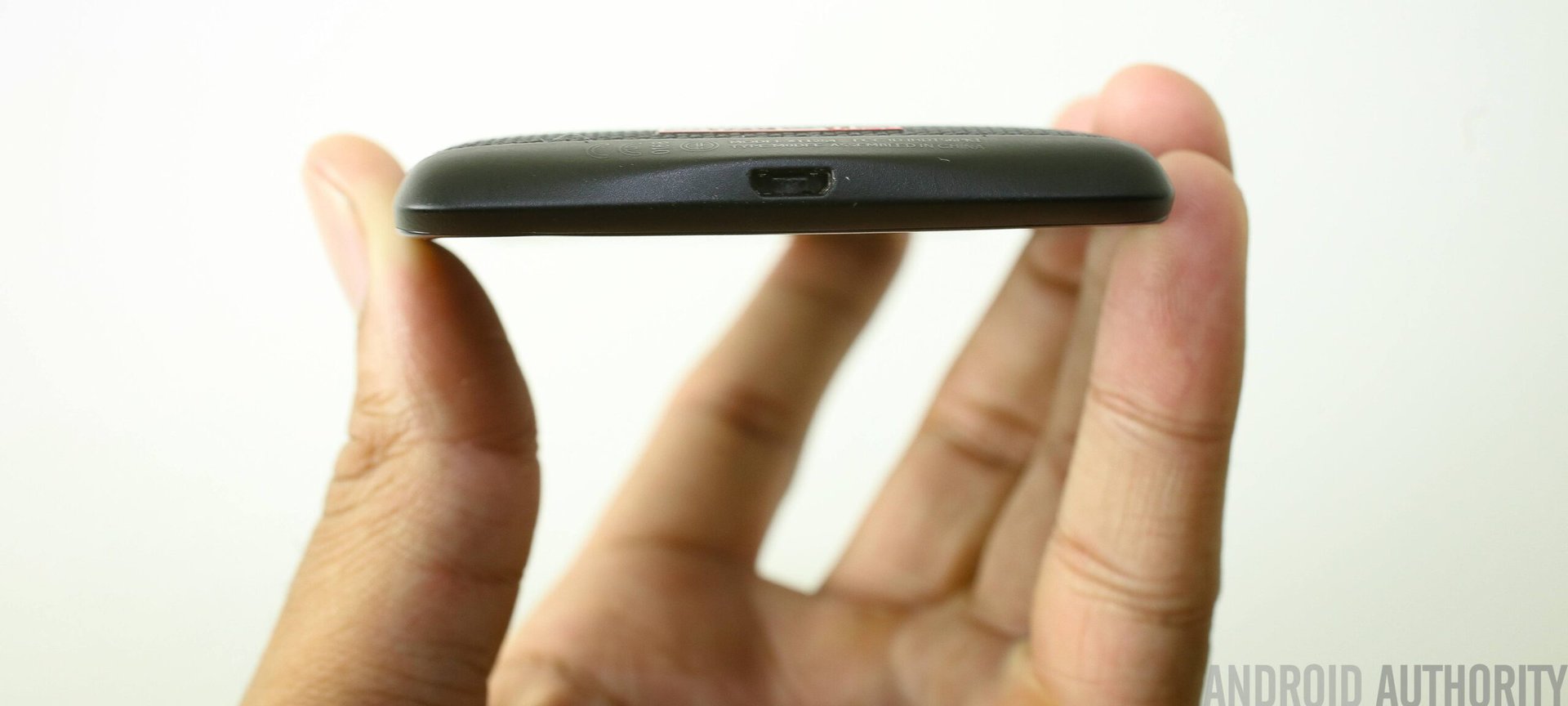
Up front you’ll find three capacitive keys below the display, which follow the layout of the on-screen keys you’d find with typical Android 4.4 Kitkat devices. On the right side is the power button and the volume rocker, which come with a textured feel, and offer a good amount of tactile feedback.
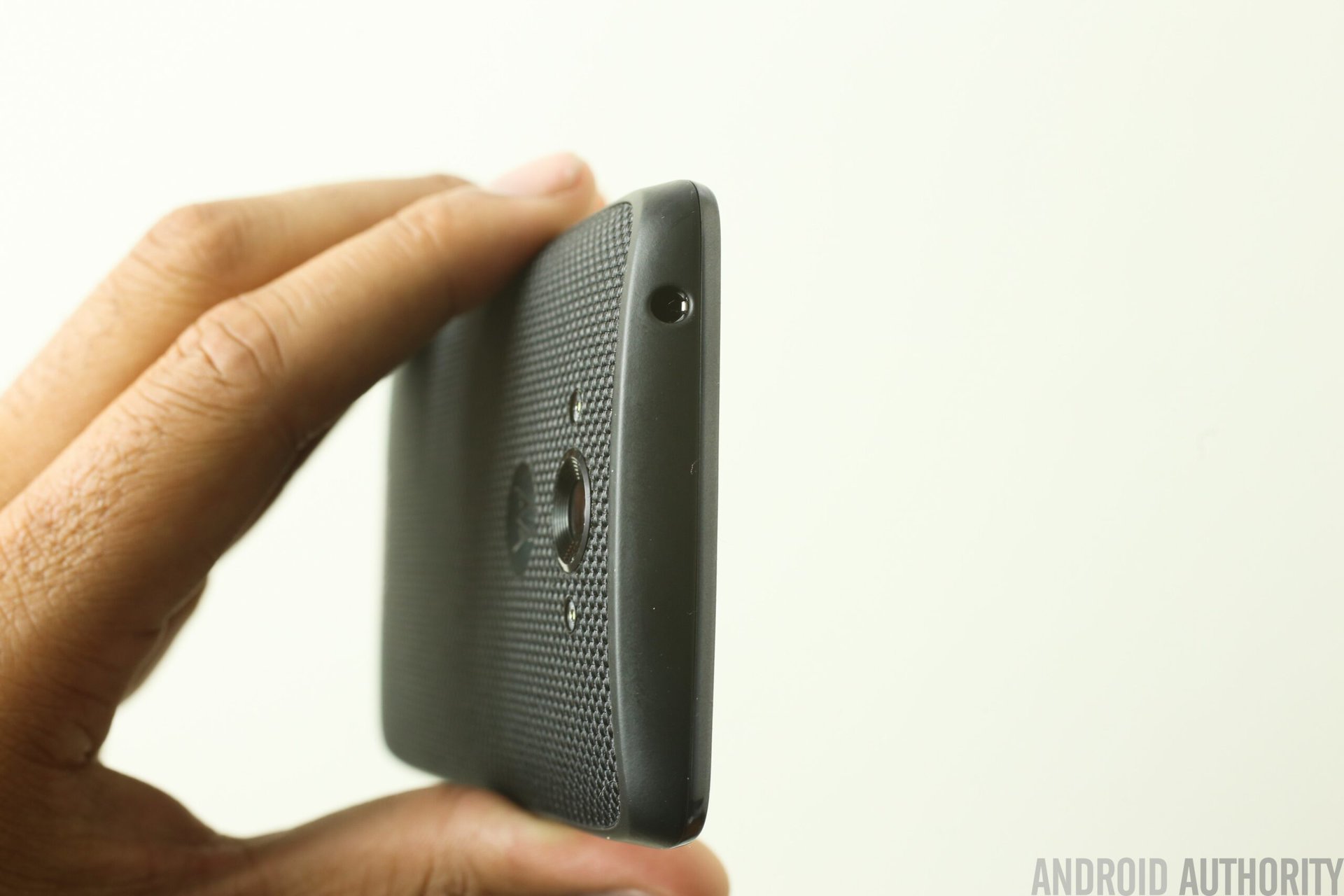
At the top and bottom are where you’ll find the headphone jack and the microUSB charging port respectively.
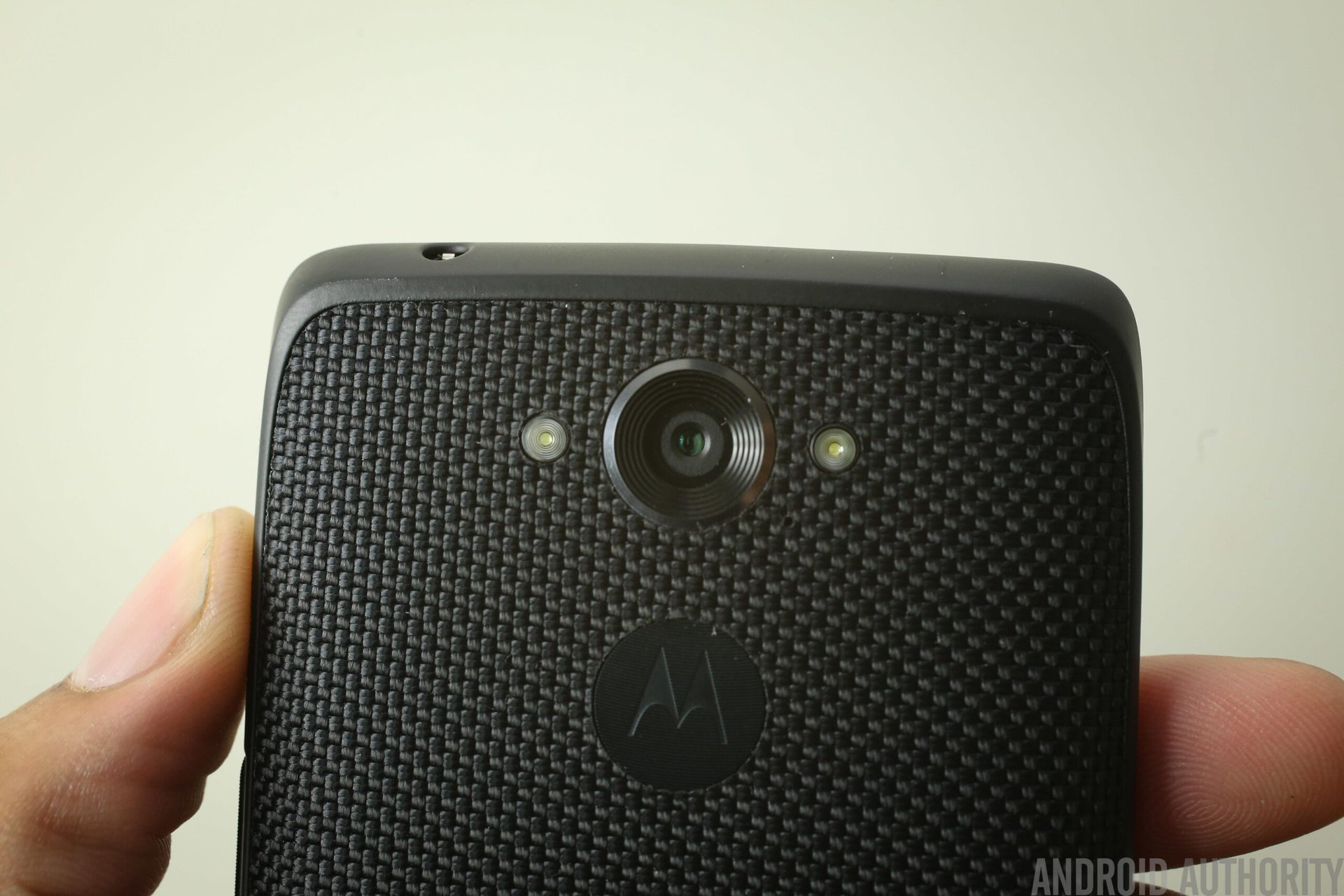
On there is a 21 MP camera unit with a dual LED flash, along with the Motorola logo, which isn’t dimpled like the Moto X (2014) or the Nexus 6. Below that is a Droid logo with 64 GB written inside of it, but that is something you’ll only see with this Ballistic Nylon version, with the metallic black and red iterations featuring the Verizon Wireless logo in this space.
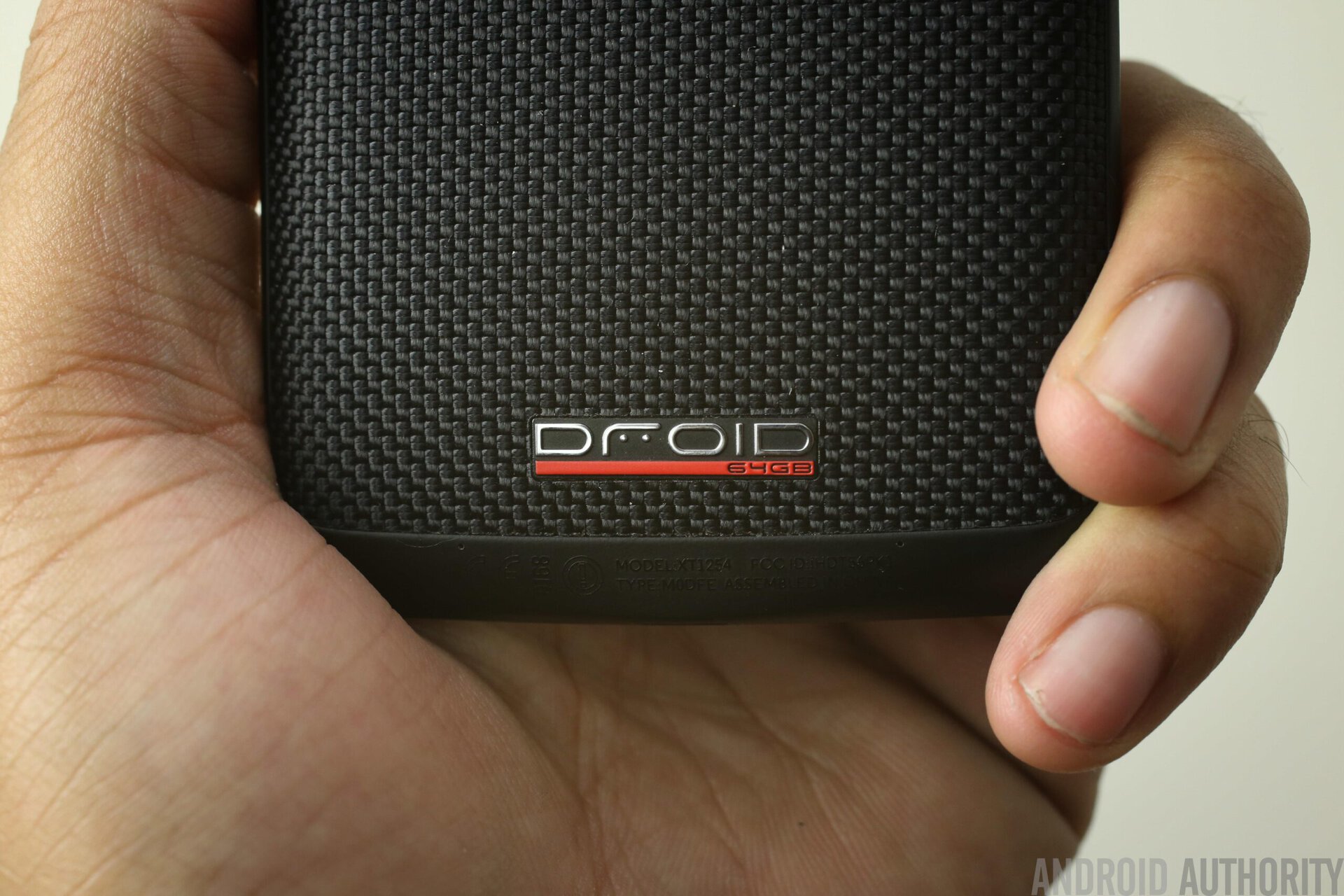
The ballistic nylon material choice definitely feels more rugged, and the 10 grams it adds to the weight compared to other iterations is a negligible difference. It’s not slippery at all, and along with the prominent curve on the back, grip is of no issue with this device, to a point where you might even feel confident enough to use it without a protective case or cover. The Droid Turbo may not come with the flashiest of designs, but there’s no denying that it feels great in the hand.
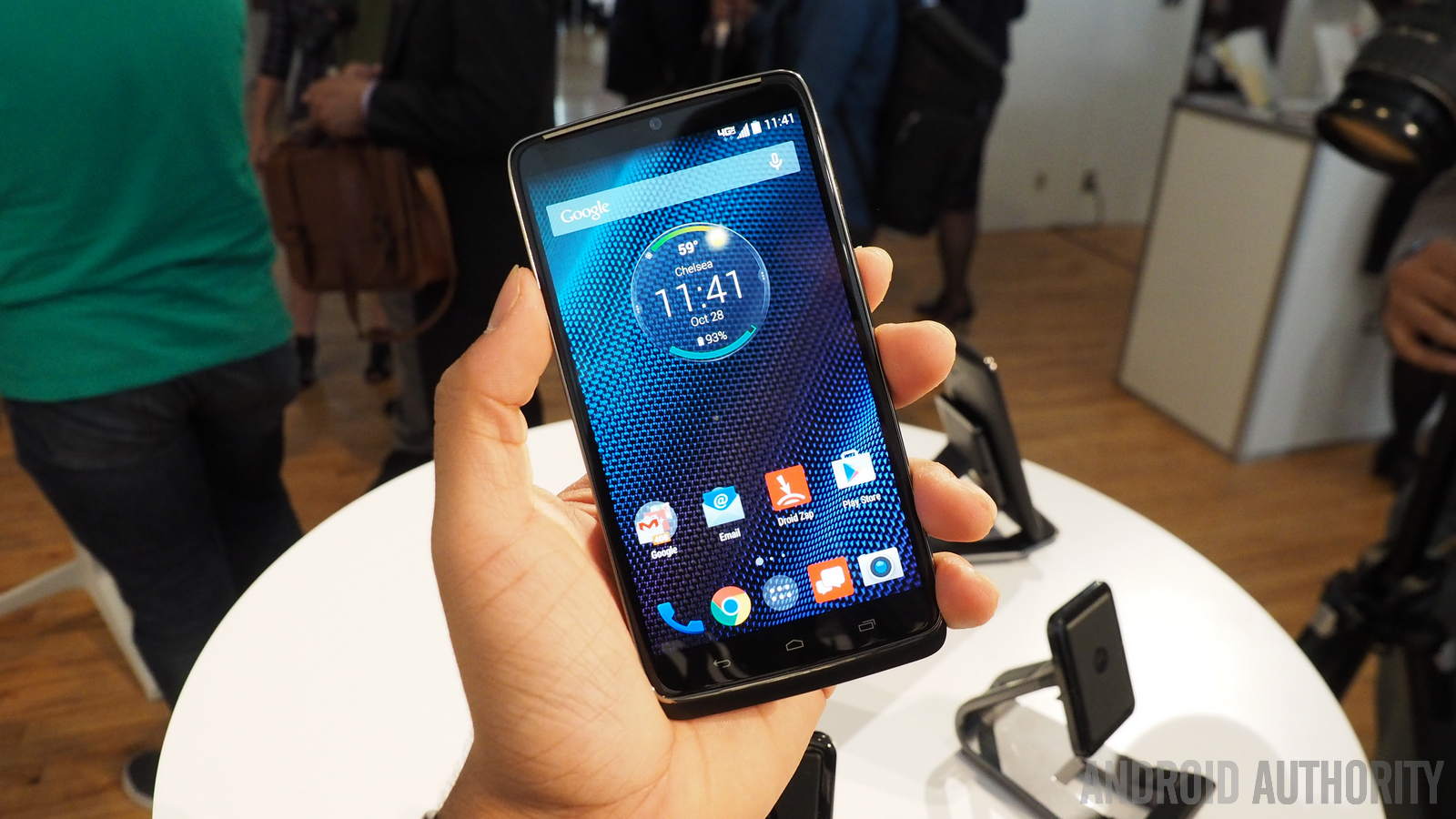
The Droid Turbo features a 5.2-inch AMOLED display protected by Corning Gorilla Glass 3, and boasts a Quad HD resolution, resulting in a pixel density of a whopping 565 ppi. This is one of the highest pixel densities we’ve seen on a smartphone display yet, and is certainly a contributing factor to the great viewing experience this display offers.
As you’d expect from any AMOLED screen, colors are punchy, there are no complaints with regards to viewing angles, and the screen is quite visible even in the bright outdoors. You’ll have a great time doing anything on this display, including reading text, watching videos, and playing games. Granted, at this size, a 1080p resolution would have still be very impressive, but if this is the direction the industry is going to move in, the Droid Turbo is a great showcase of what to expect in the future.
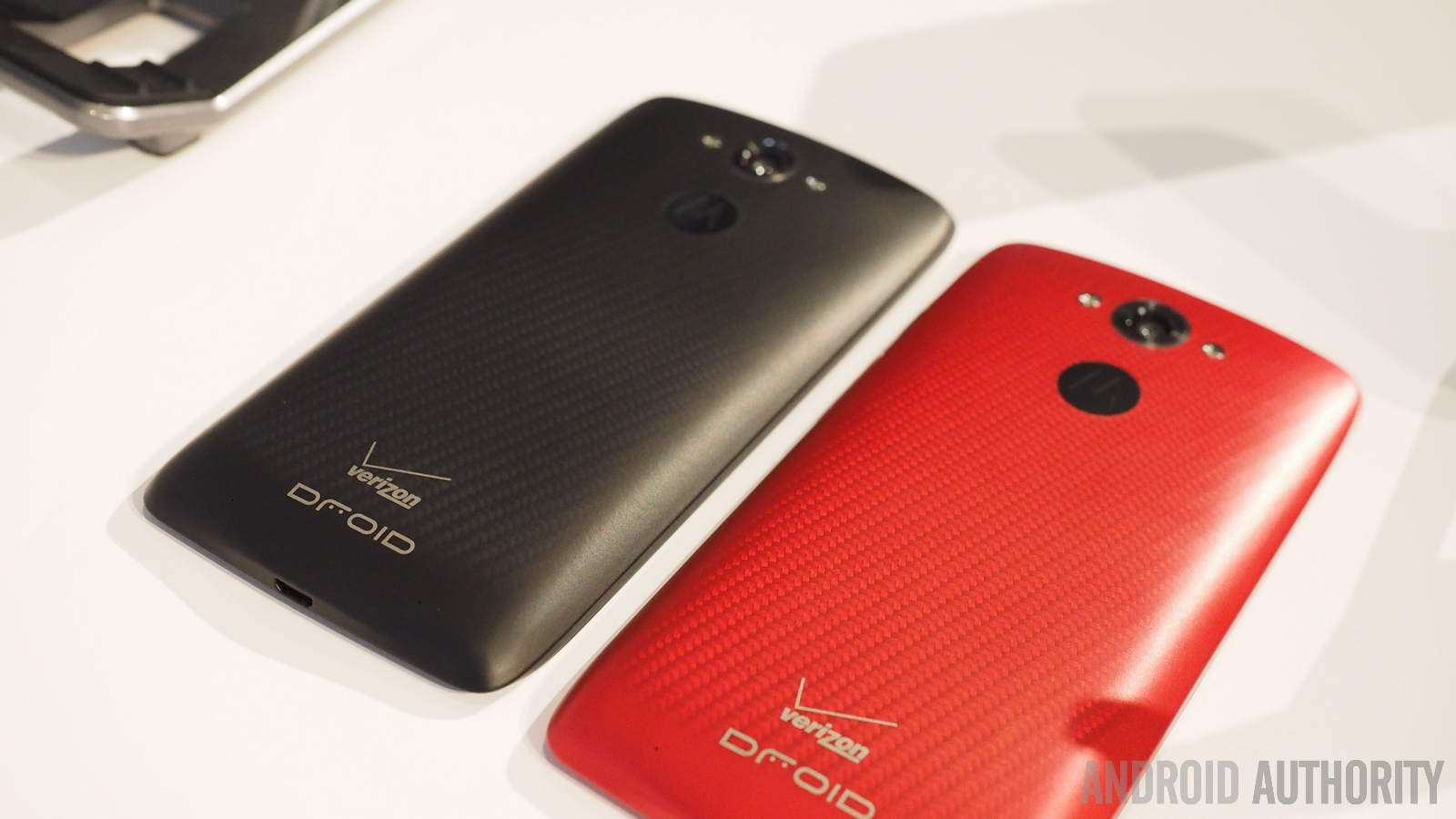
When it comes to the hardware, the top-of-the-line specifications of the Droid Turbo did catch some by surprise, especially when you consider that this is a carrier exclusive device (with another iteration making its way to limited worldwide markets). With the quad-core Qualcomm Snapdragon 805 processor, clocked at 2.7 GHz, the Adreno 420 GPU, and 3 GB of RAM, the Droid Turbo boasts the best processing package currently available, and this is certainly reflected in the performance.
| CPU/GPU | Qualcomm Snapdragon 805, Quad-core 2.7 GHz Krait 450 / Adreno 420 |
|---|---|
Display | 1440 x 2560 pixels, 5.2 inches |
RAM | 3GB |
Memory | 32/64GB |
Battery | 3900 mAh, Wireless charging, Turbo Charger |
Camera | 21 MP (5248 x 3936), autofocus, dual-LED flash / 2MP front cam |
Connectivity | WiFi 802.11 a/b/g/n/ac, Wifi direct, GPS / GLONASS, NFC, Bluetooth® v 4.0 (LE) |
Sensors | Accelerometer, gyro, proximity, compass |
OS | Android 4.4 KitKat |
Dimensions and Weight | 143.5 x 73.3 x 11.2 mm, 176 grams |
As expected, the Droid Turbo easily powers through any and every task you may throw at it. multitasking is a breeze, opening applications are smooth and snappy, even playing graphically-intensive games such as Grand Theft Auto: San Andreas didn’t result in even the slightest of slowdowns. Aided by a near stock software experience, performance is one area that will be of no issue with the Droid Turbo.

The standard set of connectivity options are available with this device, and the only hardware aspect that is missing is expandable storage. 32 GB and 64 GB of built-in storage options should be more than enough for most users though. Also keep in mind the fact that the Ballistic Nylon version is available only with 64 GB of internal storage.
All of this fantastic hardware of the Droid Turbo is also protected from the elements, courtesy of its IP67 rating for resistance to dust and water, which means almost complete protection from dust, and the ability to use the phone in up to 1 meter of water for as long as 30 minutes, without any negative affect on functionality.
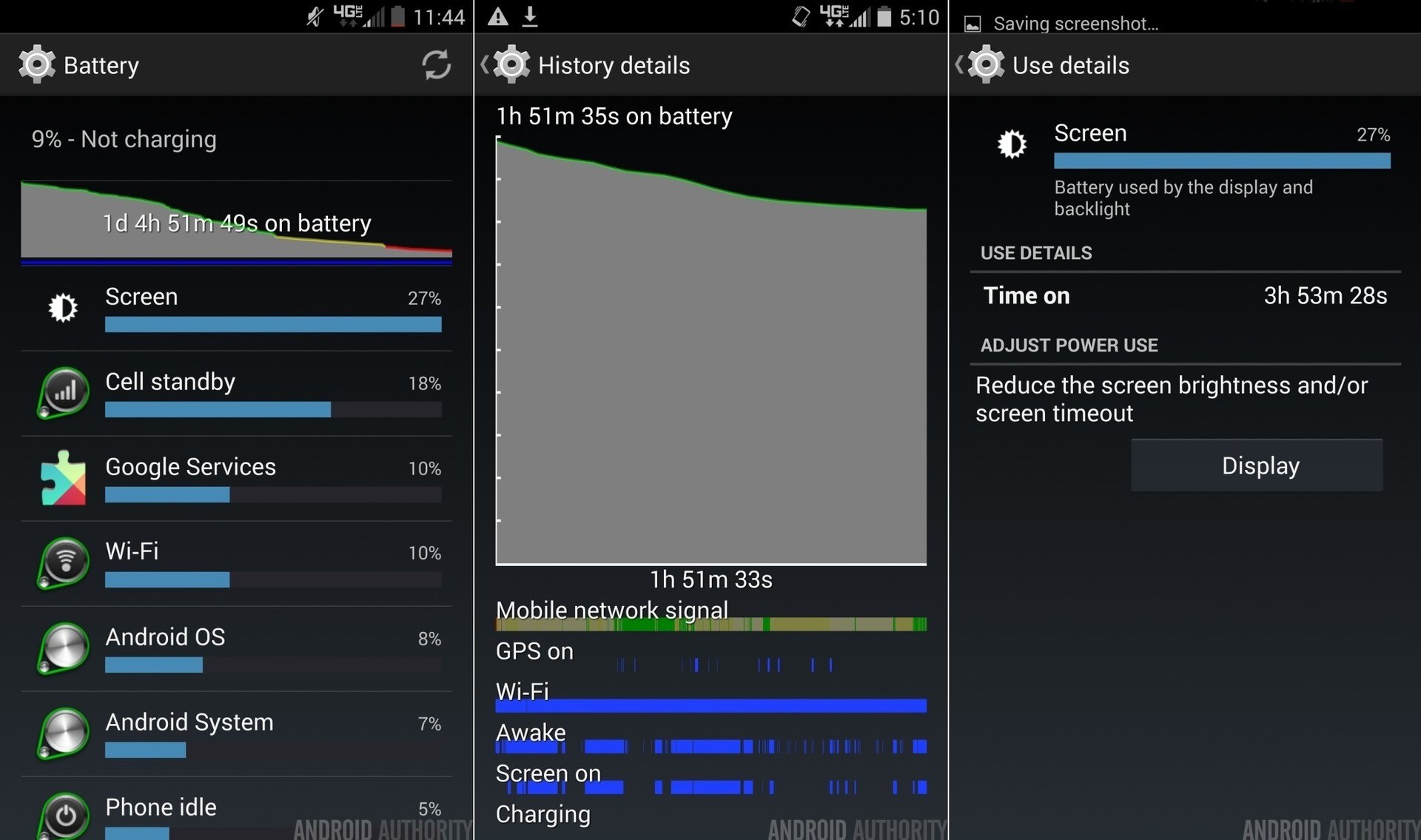
Motorola states that you can get as much as 48 hours of use out of the large 3,900 mAh battery of the Droid Turbo. But in my testing, I managed to squeeze around 29 hours, with normal usage with around 4 hours of screen-on time, which is of course, still very impressive, but not at the promised level. To alleviate any battery concerns you may have is the fact that the Droid Turbo also comes with the Motorola Turbo Charger in the box, that lets you get up to 8 hours of use just by charging for 15 minutes. While not offering the same fast charging speeds, the Droid Turbo also comes with a wireless charging capability, and is compatible with any Qi wireless charger currently available.
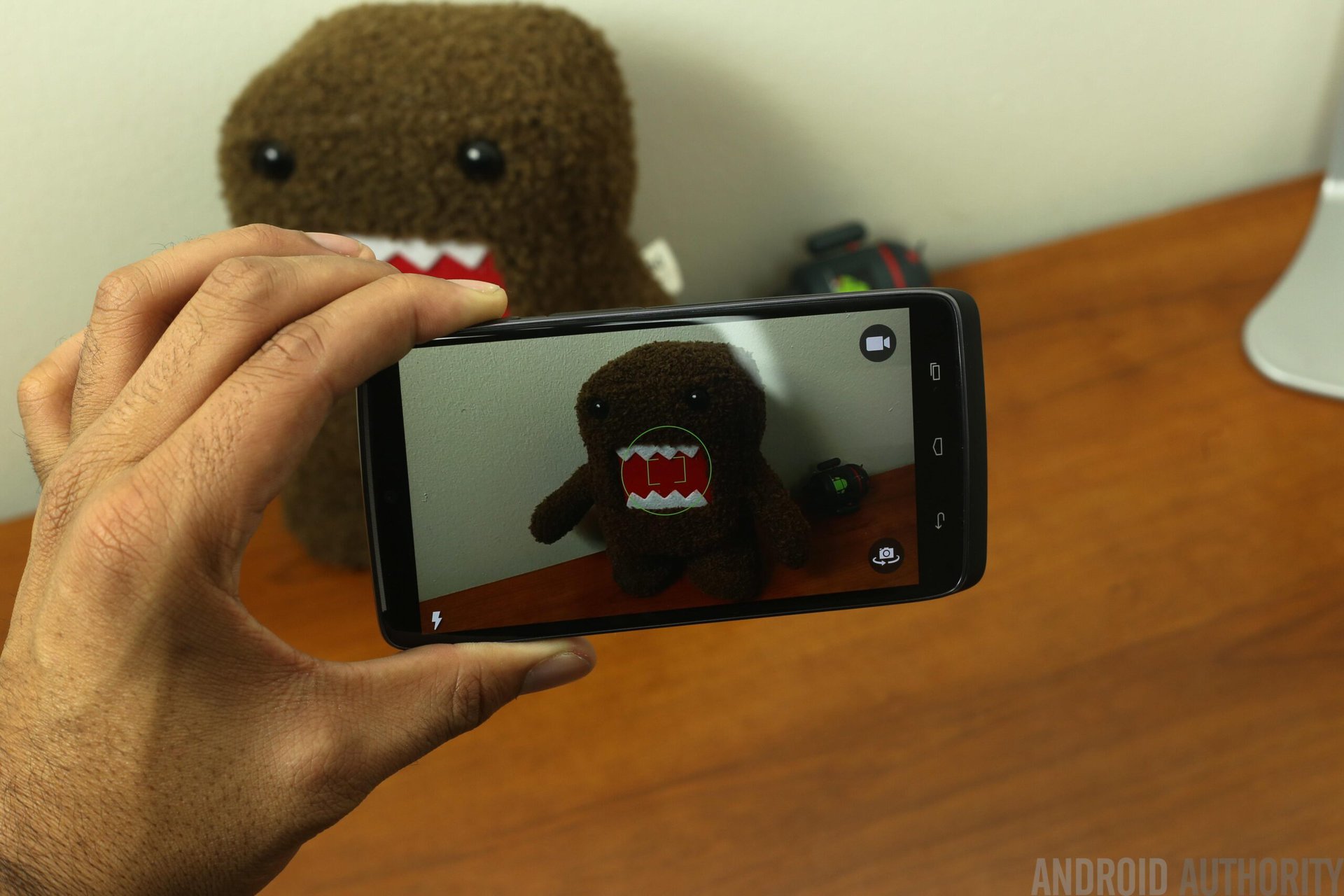
The Droid Turbo comes with a 21 MP rear shooter with a f/2.0 aperture and dual LED flash, along with a 2 MP front-facing unit. When it comes to the camera application, things remain simple and minimalistic, with only a few shooting modes like HDR and panorama available.
Accessing the camera is also quite easy, requiring you to simply twist your wrist a few times from any screen, to open up the application. Despite this uncomplicated app, the camera, that utilizes tap to focus and shoot, does allow for some good shots, with a lot of detail, and good color reproduction. It may not be the absolute best smartphone camera out there, but it does rank quite close to the top.
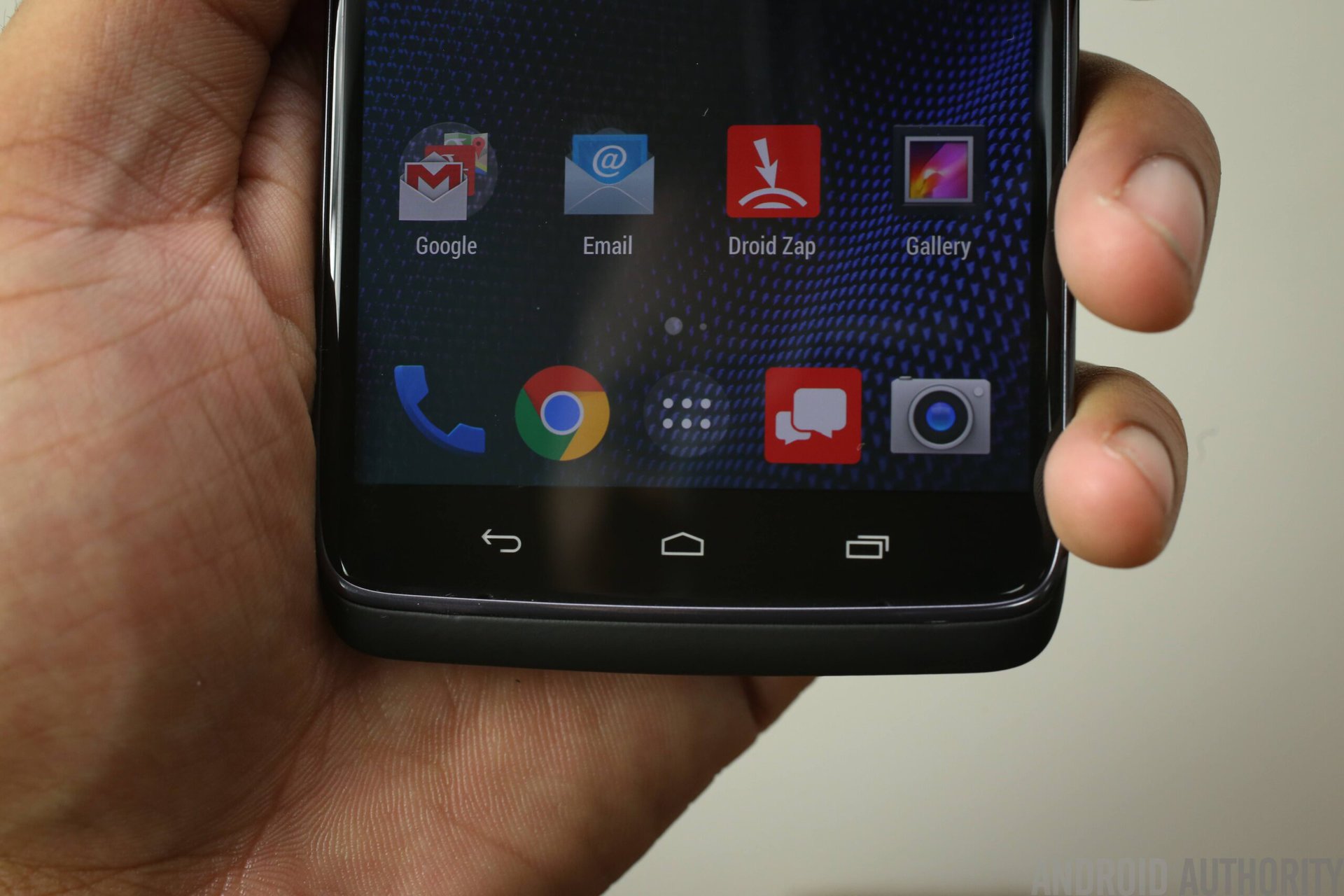
Motorola maintains its minimalist software philosophy with the Droid Turbo, offering a clean and simple, almost stock-like software experience, with a few very useful additions on top. The Droid Turbo comes with Android 4.4.4 Kitkat out of the box, with an update to Android 5.0 Lollipop expected quite soon, at least if Motorola’s track record is anything to go by. Granted, this is a carrier-exclusive device, so you will find your fair share of bloatware, but that is something that will happen with any smartphone you get from any US carrier.
Droid Zap isn’t a new introduction with this device, but is a pretty decent refresh. What the app does is search for other people using Droid Zap, and then bring in all the photos in a real time stream. You can also fling photos to another person using this app. Chromecast support is built-in, and even iOS users can install this app, so this could prove to quite useful if more and more people begin to use it.
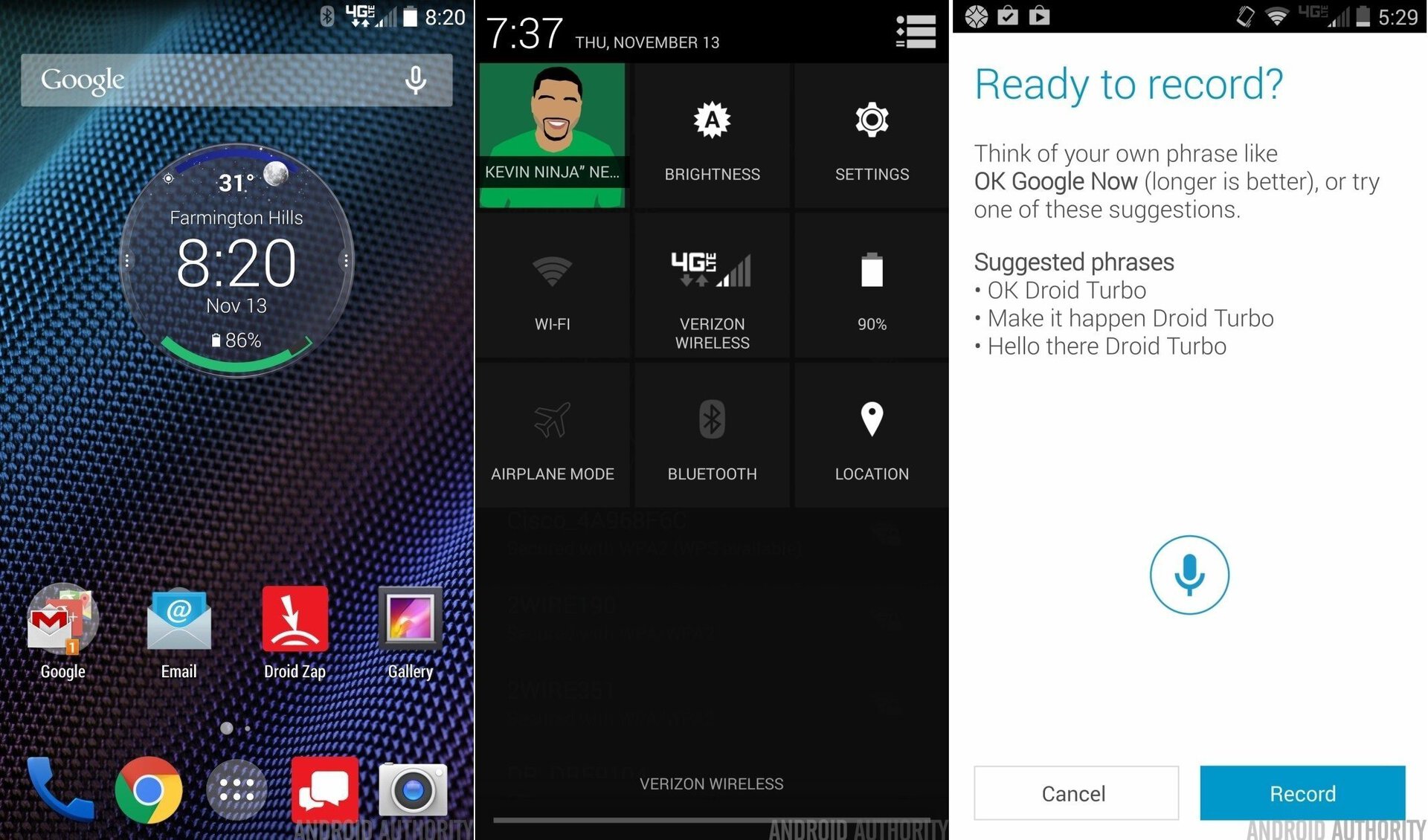
The latest version of Moto Assist makes its way to this device as well. All of the features you loved about Assist are still here, while adding the ability to interact with other applications. Once you trigger the completely customizable keyboard, you can use Moto Assist to post to Facebook, set reminders, do perform a slew of activities that are housed outside the Assist applications. That said, this is only the start, albeit a good one, but it does have a long way to go.
The software feature I most appreciate and use is Active Notifications. The AMOLED display has the ability to only light up the pixels that are needed to show the notification, helping with battery life. The phone pulses the information on the screen, allowing you to see your notifications with a quick glance. You can also then read any messages, dismiss messages, and even cycle through them all on the lockscreen. This feature is activated whenever you reach for your phone.
The Motorola Droid Turbo is available exclusively from Verizon Wireless for $199.99 with a 2 year contract, $24.99/month under Verizon’s Edge program, or for the full retail price of $599.99.
So, there you have it – the Motorola Droid Turbo! The Droid Turbo offers what many would have hoped from the Moto X (2014), but in comparison, what the Moto X lacks in specifications, it makes up for in terms of design. The Droid Turbo is a solid device, and with its IP67 rating, can brave the elements, and stay relatively safe from accidental bumps and drops. The latest and the greatest in specifications puts the Droid Turbo in an exclusive league that includes the Samsung Galaxy Note 4 and Nexus 6, and it certainly is disappointing that this fantastic device is available only from Verizon, even if an international version, under the name Moto Maxx, will eventually make its way to limited markets.